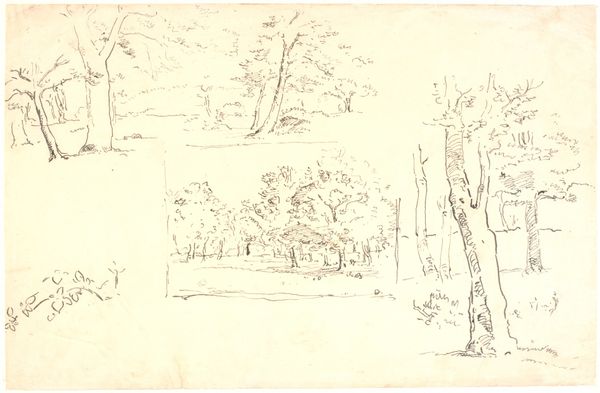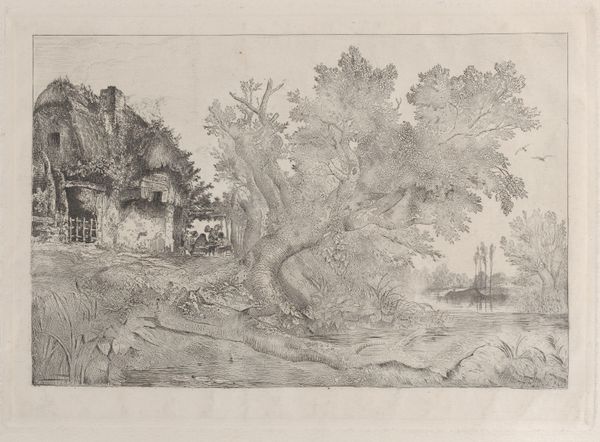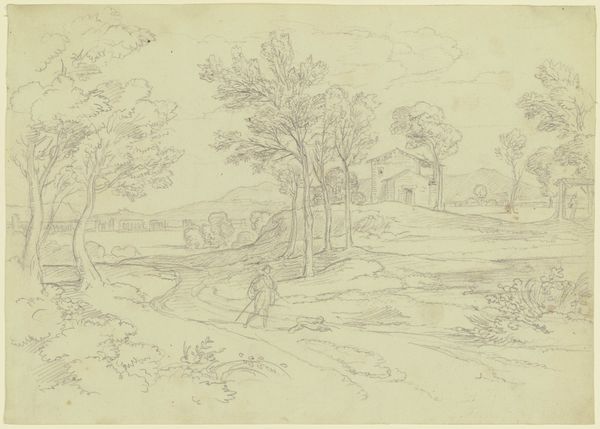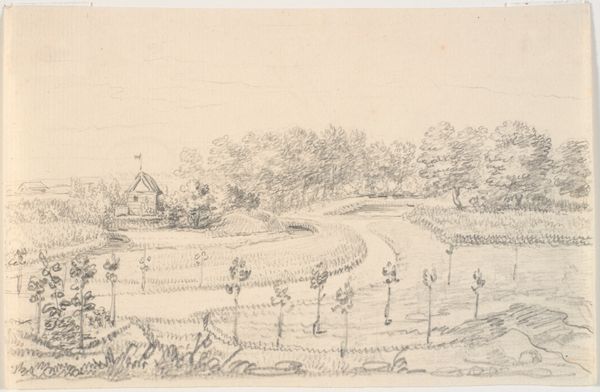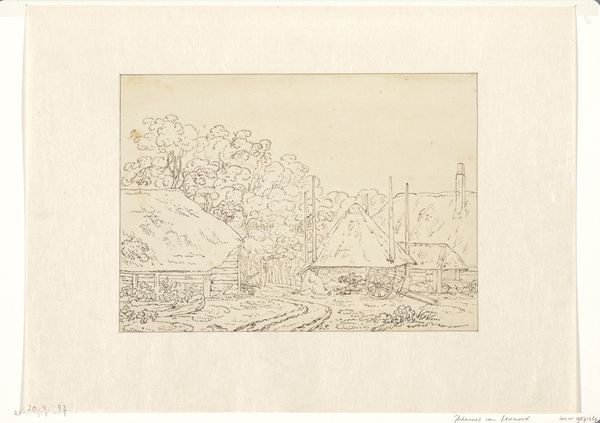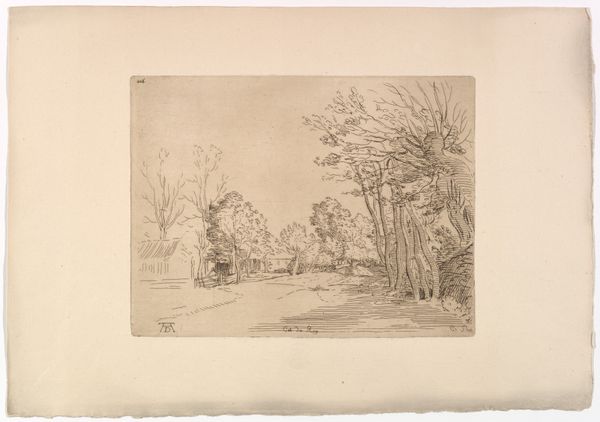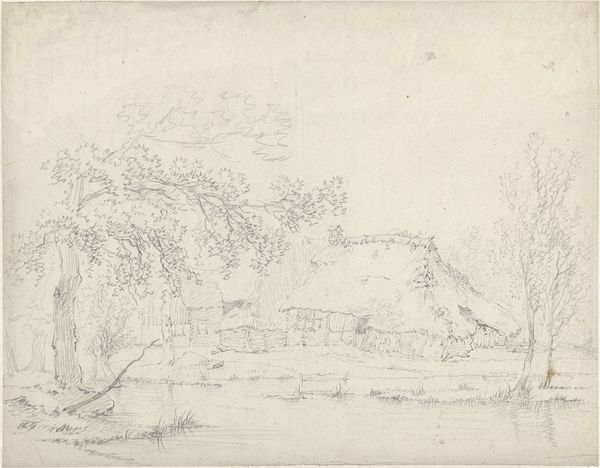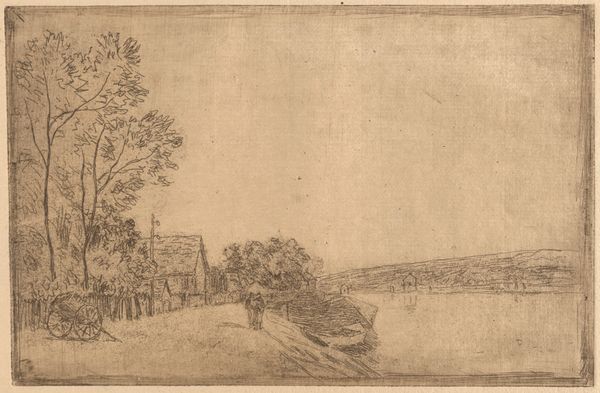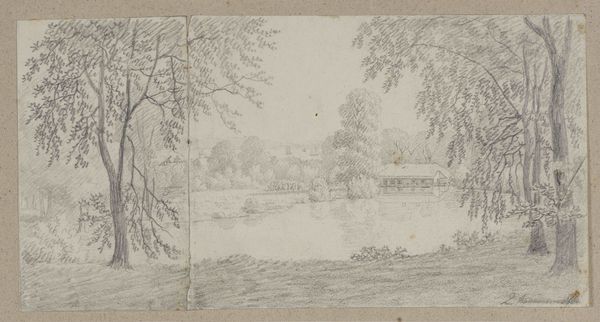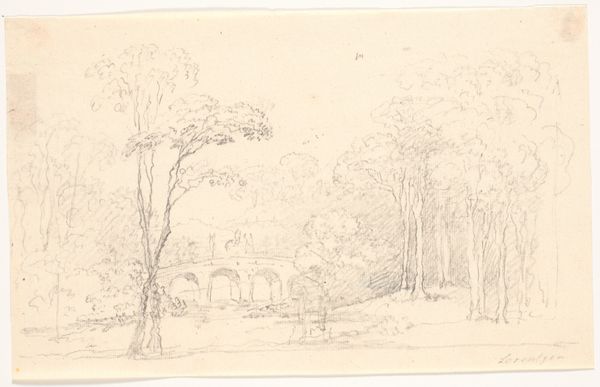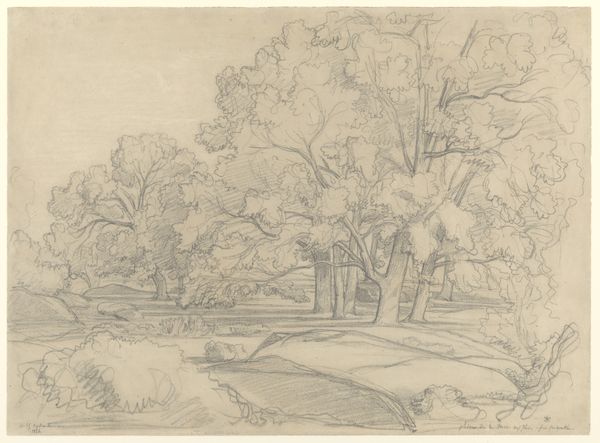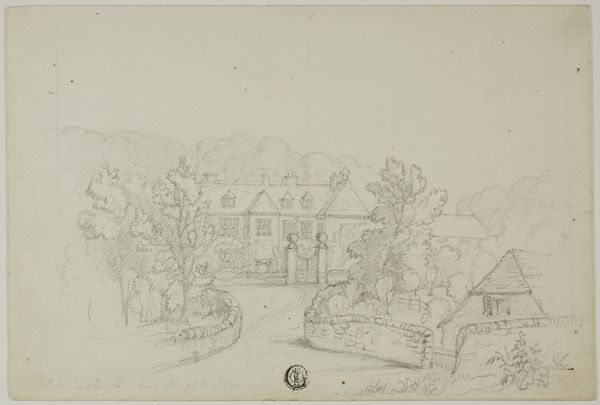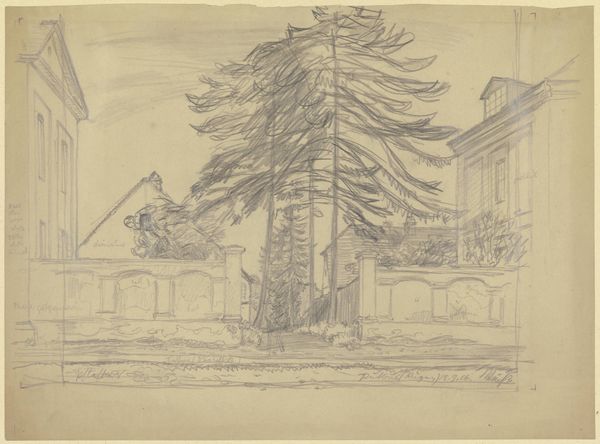
drawing, pencil
#
drawing
#
landscape
#
pencil
#
academic-art
#
realism
Dimensions: 474 mm (height) x 583 mm (width) (bladmaal)
Curator: This pencil drawing is entitled "Landscape with farm by a lake," or, to give it its full Danish title, "Landskab med gård ved en sø. F.o.t.v. en gård". It’s the work of C.A. Lorentzen and thought to have been completed somewhere between 1746 and 1828. Editor: It's... tentative. There’s a vulnerability to these light lines that is so evocative, almost wistful. Curator: Indeed. What appears to be a study holds immense potential, as though it contains many unwritten social narratives. We can interpret it as an insight into rural life, a representation that excludes people, and maybe prompts critical thoughts about societal structures and the labor relations during Lorentzen's time. What cultural meanings are embedded within this image? Editor: To me, the repetition of architectural forms - farmhouses primarily - establishes a cadence, an echo through history. This recurring structure perhaps signifies stability, tradition, or even the cyclical nature of agrarian life and continuity. Curator: Precisely! The way Lorentzen positions the farmhouses in relation to the water subtly references Denmark's deep relationship with the sea, the waterways offering potential trade routes or threats depending on social forces and global circumstances at the time. I can feel the history here! Editor: And the trees...they speak to something enduring and powerful. Despite their slender presence on the page, the trees as a universal symbol signify both life and a silent witness to the passage of time. There’s even some delicate cross-hatching that almost softens the hard edges of labor. It's a very grounding composition, very emotionally stable. Curator: Absolutely. Its realism prompts us to investigate the real conditions of those working and living in these farm settings and, even more broadly, what they suggest about our shared humanity and societal progress in the 18th and 19th centuries. Editor: Such simple strokes carry remarkable cultural weight, and I, for one, appreciate its transparency and inherent humbleness. Curator: A fine testament to that bridge between past, present and its potential futures. Editor: It is food for the eye and, simultaneously, for thought.
Comments
No comments
Be the first to comment and join the conversation on the ultimate creative platform.
